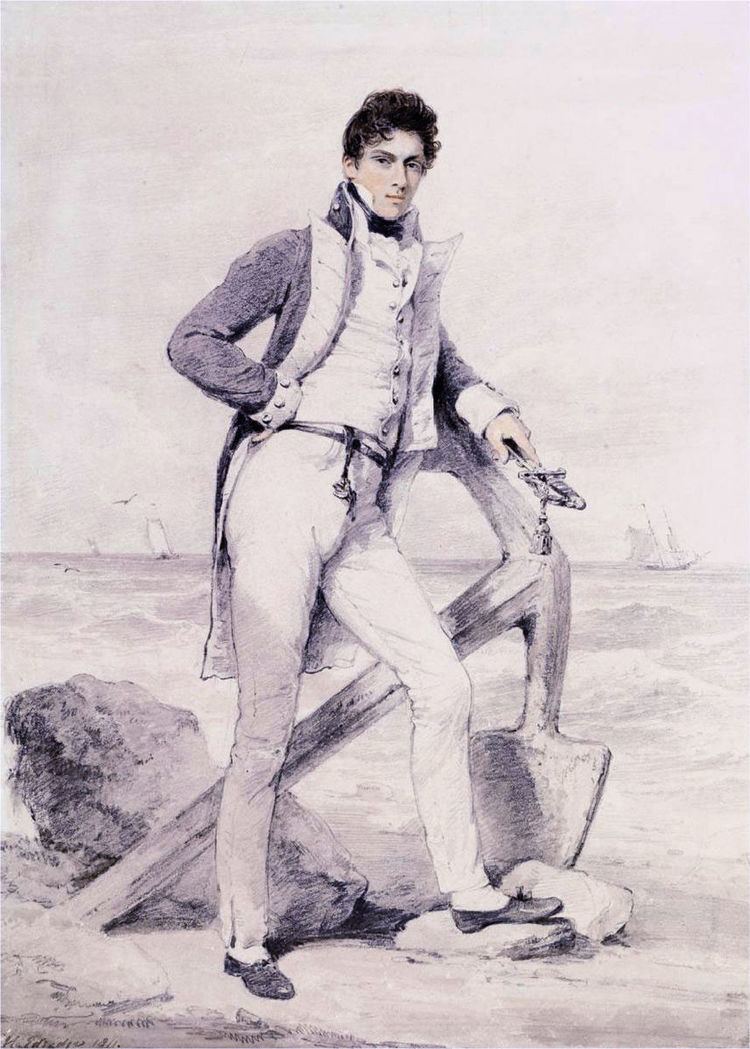Name HMS Amphion Beam 37 ft 6 in (11.4 m) Builder Mistley | Tons burthen 914 (bm) Launched 19 March 1798 | |
 | ||
Length 144 ft (43.9 m) (gundeck) | ||
HMS Amphion was a 32-gun fifth rate frigate of the Royal Navy. She served during the Napoleonic Wars.
Contents
Amphion was built by Betts, of Mistleythorn, and was launched on 19 March 1798.
Career
Amphion's first mission was to Jamaica in 1798, but by 1799 she was off Southern Spain under Captain Bennett. That year she captured a Spanish letter of marque, Nuestra Senora del Corvodorvya (alias Asturiana), on 25 November 1799. Asturiana was armed with eighteen 8-pounder and two 12-pounder guns, and four 36-pounder howitzers. She and her crew of 180 men were sailing from Cadiz to La Vera Cruz with a valuable cargo. She had been part of a convoy of five vessels. Amphion shared with Alarm in the head-money that was finally paid in March 1829.
Amphion remained in the Mediterranean until the Peace of Amiens. In 1802 Amphion was employed in attacking British smugglers in the English Channel and later conveyed the ambassador to Portugal to Lisbon.
In 1803 Amphion was paid off but later recommissioned and transported Horatio Nelson to the Mediterranean to take command. She remained in the Mediterranean under Captain Samuel Sutton, and was part of the fleet blockading Toulon. Amphion was one of the ships selected to hunt and capture the Spanish treasure fleet destroyed at the Action of 5 October 1804. In October 1805 the captaincy was given to William Hoste at Lisbon, and he sailed to Gibraltar and subsequently Algiers before operating off Cadiz and Sicily.
After the battle of Trafalgar on 21 October 1805, Amphion was at the blockade of Cadiz. On 25 November, Thunderer detained the Ragusan ship Nemesis, which was sailing from Isle de France to Leghorn, Italy, with a cargo of spice, indigo dye, and other goods. Amphion shared the prize money with ten other British warships.
In May 1808, Hoste was ordered to attack the French frigate Baleine off Rosas. Amphion succeeded in destroying the vessel without severe loss and in November joined HMS Unite off Trieste in the Adriatic. There Hoste operated against French and Italian shipping for the next three years, sailing from Lissa and periodically refitting at Malta. In this time, Hoste managed to capture or destroy huge quantities of French supplies and provoked the attention of a French squadron under Bernard Dubourdieu. In March 1811, Dubourdieu attacked at the Battle of Lissa and was heavily defeated, Amphion's fire killing Dubourdieu and wrecking his flagship. Two other ships were captured, but Hoste was wounded and the ship returned to Britain.
In 1813 Amphion was attached to the North Sea fleet and late in the year her crew landed on Schouwen-Duiveland in the Netherlands and captured the island. In early 1814 Amphion continued to attack French shore positions along the North Sea coast but with the end of the war returned to Britain. In 1818 Amphion sailed to Brazil and in 1820 she was decommissioned.
Fate
In November 1820 year she was sunk as a breakwater at Woolwich. The wreck was subsequently sold in September 1823 to Joiliffe and Banks for breaking up.
